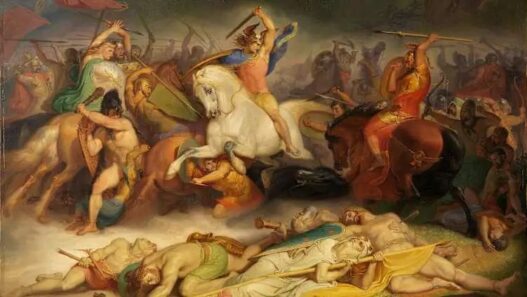Ter um animal de estimação pode ser uma experiência gratificante, cheia de alegria e companhia. No entanto, nem todos os animais são adequados para todas as famílias. Alguns exigem cuidados substanciais, custos de manutenção elevados e até conhecimento especializado. Seja por necessidades ambientais específicas ou hábitos alimentares complexos, esses animais frequentemente desanimam potenciais donos.
Neste artigo, exploraremos os 10 animais de estimação mais desafiadores de cuidar no mundo, mergulhando em seus requisitos únicos e os desafios enfrentados por seus donos. Cuidar desses animais não é apenas uma demonstração de amor pelos animais, mas também um símbolo de responsabilidade e compromisso.
Camaleões
Camaleões, cientificamente conhecidos como Chamaeleonidae, são répteis pertencentes à família dos lagartos e são encontrados principalmente em árvores no Hemisfério Oriental. Essas criaturas fascinantes são mais conhecidas por sua capacidade de mudar de cor. Seus pés são adaptados para agarrar galhos com dois ou três dedos fundidos juntos, e eles possuem uma língua longa e extensível.

Embora cada vez mais populares entre os entusiastas de animais de estimação, os camaleões são desafiadores de cuidar. Eles são extremamente sensíveis a flutuações de temperatura, tornando-os propensos à morte se não forem adequadamente regulados. Um recinto especializado com controle de temperatura é essencial para fornecer um ambiente ideal para essas criaturas.
2. Huskies Siberianos
Os Siberian Huskies, comumente conhecidos como “Huskies”, são uma das raças de cães mais populares em todo o mundo. Originalmente criados pelo povo nômade Chukchi da Sibéria, eles eram usados para puxar trenós, caçar grandes animais, proteger vilarejos e guiar renas. Os Huskies são conhecidos por seus altos níveis de energia e são uma das raças de cães mais ativas.

Em termos de inteligência, os Huskies ocupam a 45ª posição, com uma variação de 40 a 54, indicando uma capacidade de obediência e intelectual média. Portanto, apesar da crença popular, sua inteligência não é tão preocupante quanto frequentemente alegado.
3. Border Collies
Originários das fronteiras escocesas, os Border Collies são um tipo de Collie criado para pastoreio. Conhecidos por sua inteligência e forte instinto de pastoreio, são altamente treináveis e ocupam o primeiro lugar em inteligência entre as raças de cães em todo o mundo.

Esses cães são adaptáveis a climas rigorosos e vêm em várias cores de pelagem, incluindo preto e branco, azul e branco e tricolores. Sua inteligência, capacidade de aprendizado rápido e alto nível de obediência os tornam ideais para pastoreio e outras tarefas. Eles são comuns no Reino Unido, EUA, Austrália e Nova Zelândia.
4. Coelhos
Coelhos são pequenos mamíferos classificados na família Leporidae, conhecidos por seus movimentos rápidos e natureza tímida. Eles frequentemente se assustam com barulhos altos, rostos desconhecidos ou a presença de outros animais, como gatos e cachorros.
Além de sua natureza delicada, o cuidado com coelhos é ainda mais complicado pela raridade de serviços veterinários especializados. Essa falta de acesso a tratamentos pode deixar os donos ansiosos quando seus animais de estimação adoecem.

5. Cavalos-marinhos
Cavalos-marinhos são pequenas criaturas marinhas pertencentes à família Syngnathidae, geralmente encontradas em mares quentes. Medindo de 5 a 30 centímetros de comprimento, eles são chamados assim devido às suas cabeças semelhantes às de cavalos. Os cavalos-marinhos têm um focinho tubular e bocas pequenas, e seus olhos independentes lhes conferem uma aparência única.

Devido aos seus hábitos alimentares especializados e estrutura bucal única, os cavalos-marinhos não podem depender de alimentos típicos para animais de estimação. Eles necessitam de camarão de água salgada congelado ou outros pequenos crustáceos. O cuidado a longo prazo envolve a criação de camarão de água salgada para garantir um suprimento contínuo de alimentos.
Camarão Mágico Negro
Nativos do sudoeste da Austrália, os Camarões Black Magic estão se tornando estrelas no mundo dos aquários, conhecidos por seu exoesqueleto preto marcante e antenas vermelhas. Eles são extremamente sensíveis às condições da água e preferem temperaturas mais baixas, frequentemente cavando para escapar do calor.

Esses camarões requerem um controle rigoroso da qualidade da água, com uma faixa de temperatura ideal de 15 a 25 graus Celsius. Mudanças frequentes de água são necessárias, mas não mais que dois terços da água devem ser substituídos de uma vez para evitar mudanças drásticas de temperatura que podem causar estresse ou morte.
7. Anêmonas do Mar
As anêmonas-do-mar são carnívoros marinhos do filo Cnidaria, especificamente da ordem Actiniaria. Embora pareçam flores, são criaturas predadoras que podem ser mantidas como animais de estimação. Muitas pessoas gostam de tê-las em seus aquários, mas mantê-las é desafiador.

Além de garantir níveis estáveis de proteínas na dieta, é crucial controlar a intensidade e o comprimento de onda da luz. Iluminação inadequada pode causar a morte rápida das anêmonas-do-mar. Além disso, antes de morrerem, as anêmonas-do-mar podem liberar toxinas que prejudicam outros habitantes do tanque.
8. Sapo Palhaço
Sapo-palhaço, também conhecido como Pérolas de Olhos de Gato, pertencem à família Bombinatoridae. Estes anfíbios são únicos e requerem cuidados específicos, muito mais complexos do que os de gatos ou cães. Seu habitat deve manter uma temperatura da água em torno de 28°C, com a adição de um filtro e esconderijos.

Embora os sapos-palhaços tenham um sistema digestivo forte, não devem ser superalimentados, pois são propensos ao consumo excessivo. Uma dieta diversificada é essencial para evitar a seletividade alimentar, e a comida deve ser trocada regularmente. A preparação para o período de hibernação também é necessária para o cuidado adequado.
9. Tartarugas-estrelas indianas
Tartarugas-estrelas indianas, também conhecidas como Geochelone elegans, são répteis terrestres encontrados na Índia, Paquistão, Sri Lanka, Síria e Iraque. Suas conchas com padrões estrelados chamativos as tornam populares entre os entusiastas de répteis.

Essas tartarugas prosperam em pastagens planas e necessitam de uma dieta composta por frutas, cactos espinhosos, plantas de folhas grossas e cardos. Quando mantidas em cativeiro, podem viver de 30 a 50 anos, exigindo um compromisso de longo prazo de seus donos.
10. Lagarto Cornudo do Deserto
O Lagarto Cornudo do Deserto, também conhecido como Phrynosoma platyrhinos, é uma espécie de lagarto cornudo encontrada no sudoeste dos Estados Unidos, Canadá e México. Esses lagartos geralmente vivem em habitats desérticos rochosos.
Embora relativamente fácil de manter como animal de estimação, eles têm necessidades especiais, como beber água borrifando suas bocas com um pulverizador. Eles também requerem uma dieta específica de formigas para regular seus níveis internos de pH.

Cuidar desses animais de estimação não é para os fracos de coração. Cada um deles vem com requisitos específicos que exigem um compromisso significativo de tempo, energia e recursos. Para amantes dedicados de animais, os desafios valem a recompensa, mas os potenciais donos devem considerar cuidadosamente se estão prontos para assumir a responsabilidade que esses animais exóticos requerem.



















